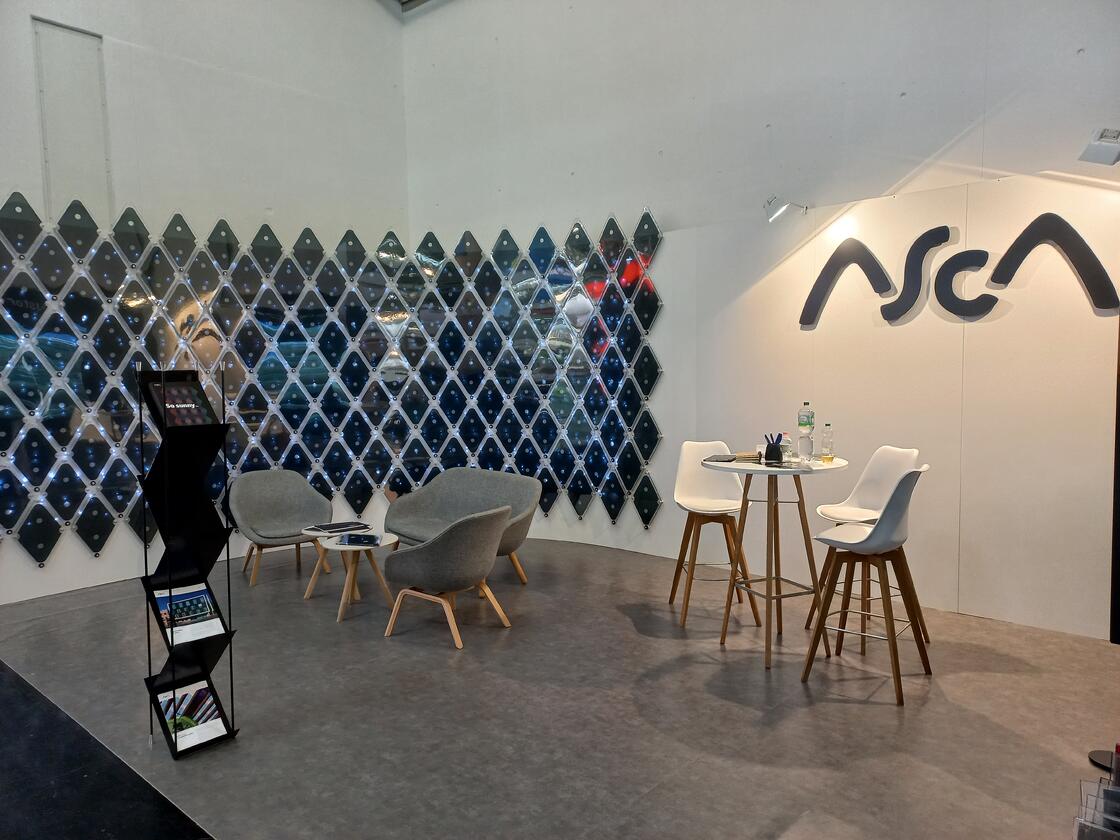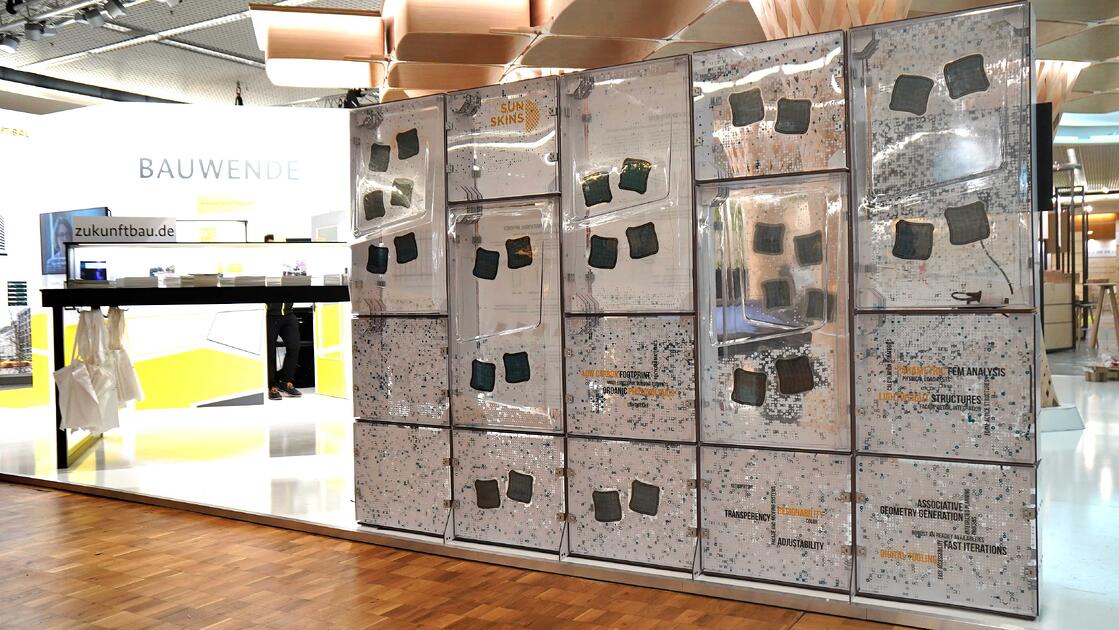
BAU 2023 in Munich was a success for the world market leader for organic photovoltaics (OPV), ASCA, an ARMOR GROUP company. At the world´s leading trade fair for architecture, materials and systems, ASCA displayed multiple custom building-integrated photovoltaic (BIPV) solutions to show their variety in application.
Beyond being known as flexible solar films, ASCA‘s custom solutions are unique as they allow infinite freedom of design thanks to their various shapes, colors, and levels of translucency as well as their compatibility with multiple materials such as glass, polycarbonate or textile. Being lightweight and flexible, ASCA’s solutions can be adapted to any kind of building material, which then becomes active and energy producing.
Changing perspectives on BIPV
Hermann Issa, ASCA's senior vice president, reflects on the days in Munich positively: “This week at BAU was a success. We were able to meet many professionals, architects and also manufacturers who were very interested in the possibilities we offer. By seeing solar architecture from a new perspective thanks to ASCA's customized solutions, they are looking forward to integrating solar energy in buildings aesthetically and without compromising on architecture. We anticipate working with them on BIPV projects that will contribute to realizing more sustainable buildings.”
Showcasing solutions for sustainable architecture
At its booth at this year’s BAU in Munich, ASCA showcased its solutions using a big curved solar wall, around 3m high and 7m wide. Additionally, a solar façade demonstrator at the booth of “Zukunft Bau Forschungsförderung”, illustrates how the ASCA® modules can be integrated within lightweight facades.
The Sun Skins research project is jointly conducted by the Frankfurt University of Applied Sciences and the Technischen Hochschule Ostwestfalen-Lippe. The project is funded by the Federal Institute for Research on Building, Urban Affairs and Spatial Development (BBSR). Sun Skins aims to develop solutions that make building-integrated PV more accessible.
Prof. Dr.-Ing. Timo Carl (Frankfurt University of Applied Sciences) from the Sun Skins research team explains how they have integrated ASCA‘s modules into their work: “We are developing lightweight, three-dimensional solar panels. For this purpose, we integrate the flexible organic PV modules from our industrial partner ASCA between two thin thermoformed films of polycarbonate. The special nature of those modules allows us to vary shape, color, and degree of transparency of the resulting composite component. A digital planning tool we developed allows users to quickly plan and adapt their designs to different installation situations“. The solar façade demonstrator showed various design options that can easily be integrated into urban architectures, helping to fulfill the requirements from the EU Directive 2010/31/EU to meet the standard "nearly zero-energy buildings" for all new buildings from 2021.

Copyright: ASCA

Copyright: Timo Carl, Markus Schein